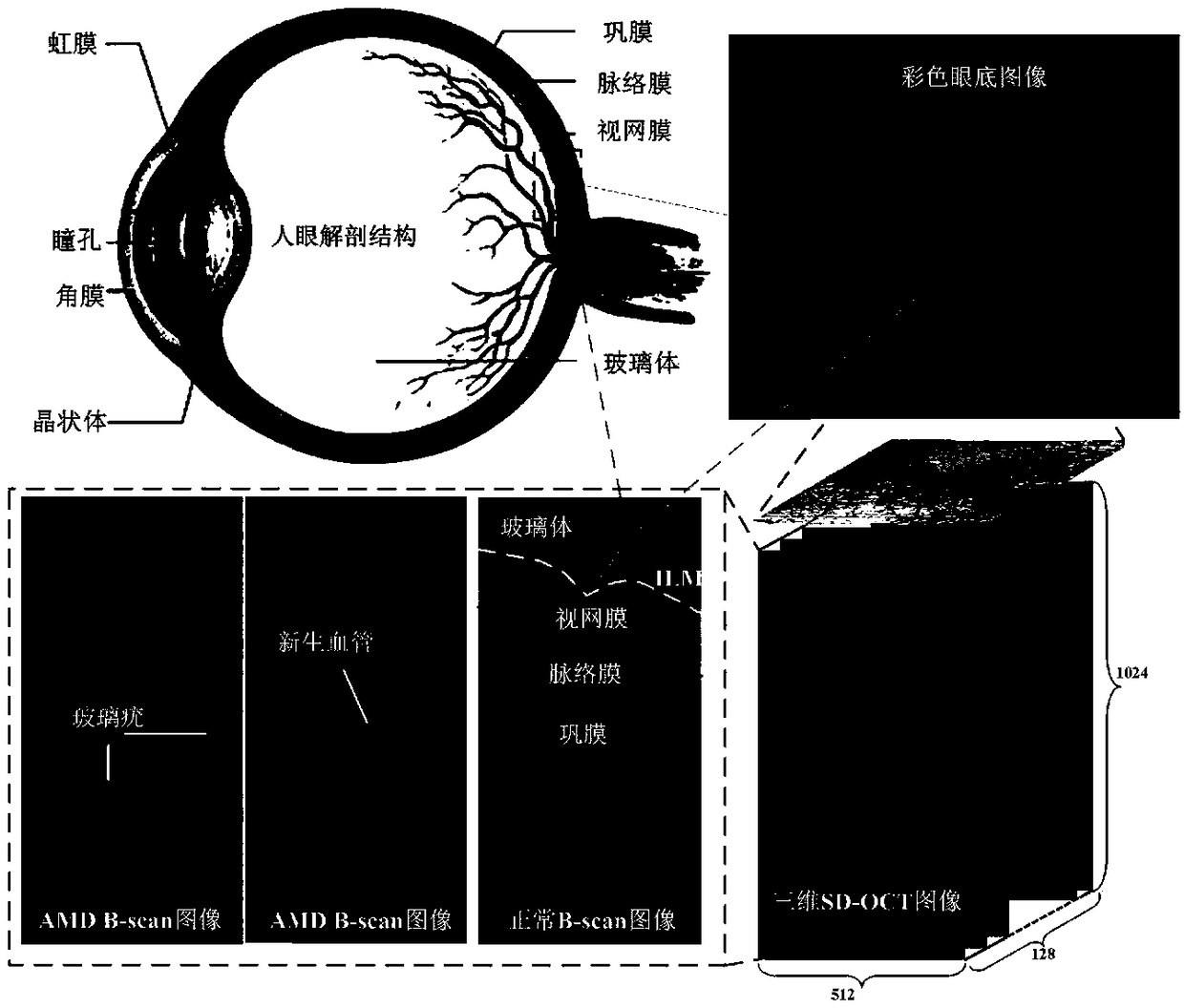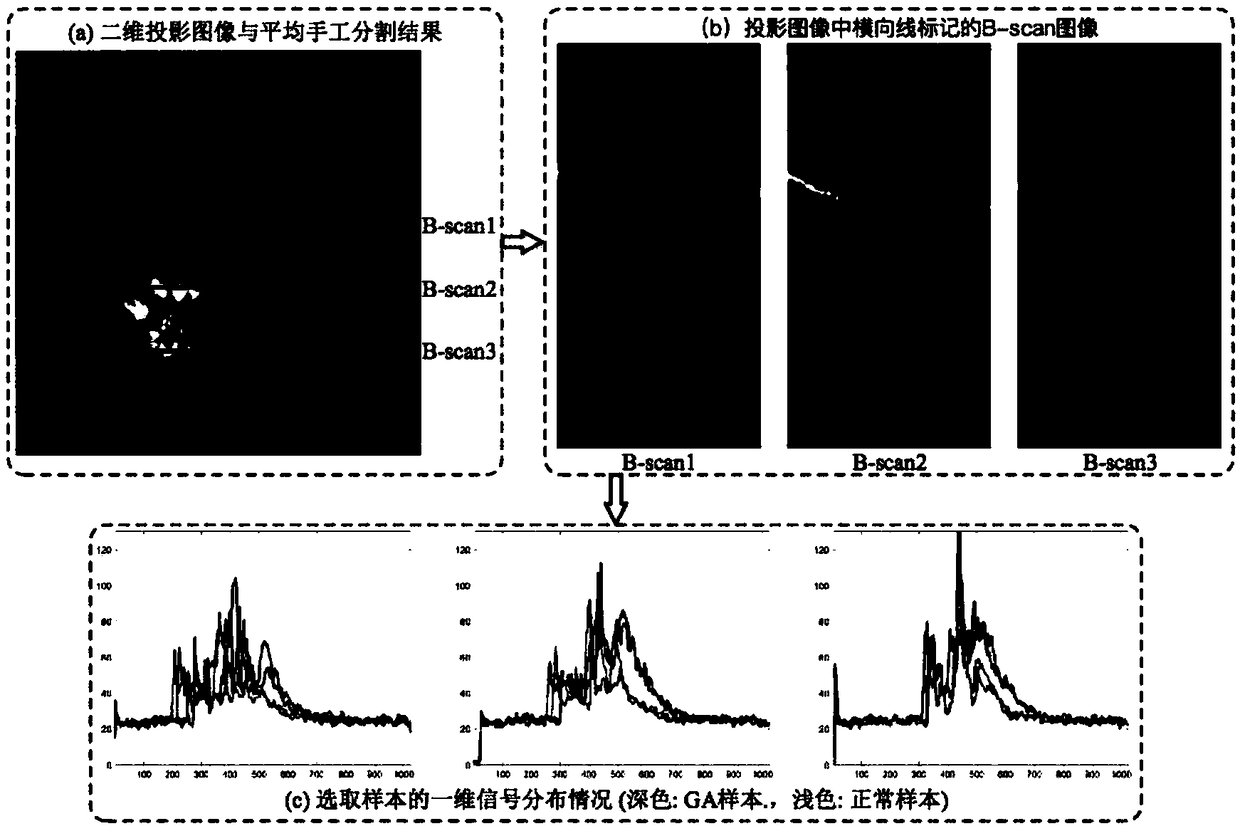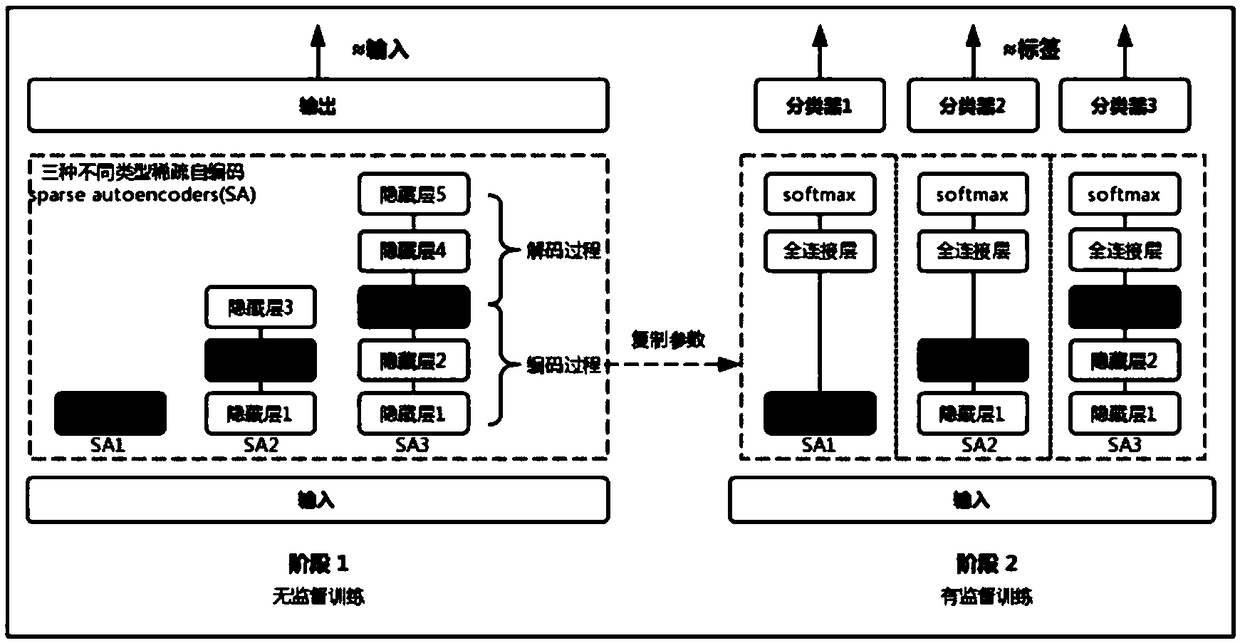GA lesion segmentation method based on depth-concatenated model for SD-OCT images
A cascade model and image technology, applied in image analysis, image enhancement, image data processing and other directions, can solve the problems of lost information, loss of important features, and the distribution of weights to the degree of inability to contribute, so as to achieve good prediction accuracy and improve segmentation accuracy. Effect
- Summary
- Abstract
- Description
- Claims
- Application Information
AI Technical Summary
Problems solved by technology
Method used
Image
Examples
Embodiment Construction
[0025] The method of the present invention proposes a diverse self-encoding feature extraction method and an adaptive cascading strategy for the first time, wherein the feature extraction method overcomes the dependence of the traditional method on the segmentation results of the layered structure and makes full use of the diversity of data acquired by the deep self-encoding Descriptive features are used to train classification models with different characteristics. The cascading strategy simultaneously considers the prediction capabilities of multiple models for different data and the contribution of positive and negative samples to the final segmentation results to update the weights, realizing high-precision quantitative analysis of GA lesion segmentation. This method first constructs three deep network models with different numbers of layers, in which the first layer is the input layer, the last layer is the output layer, and the middle hidden layer adopts one layer, three l...
PUM
 Login to View More
Login to View More Abstract
Description
Claims
Application Information
 Login to View More
Login to View More - R&D
- Intellectual Property
- Life Sciences
- Materials
- Tech Scout
- Unparalleled Data Quality
- Higher Quality Content
- 60% Fewer Hallucinations
Browse by: Latest US Patents, China's latest patents, Technical Efficacy Thesaurus, Application Domain, Technology Topic, Popular Technical Reports.
© 2025 PatSnap. All rights reserved.Legal|Privacy policy|Modern Slavery Act Transparency Statement|Sitemap|About US| Contact US: help@patsnap.com



